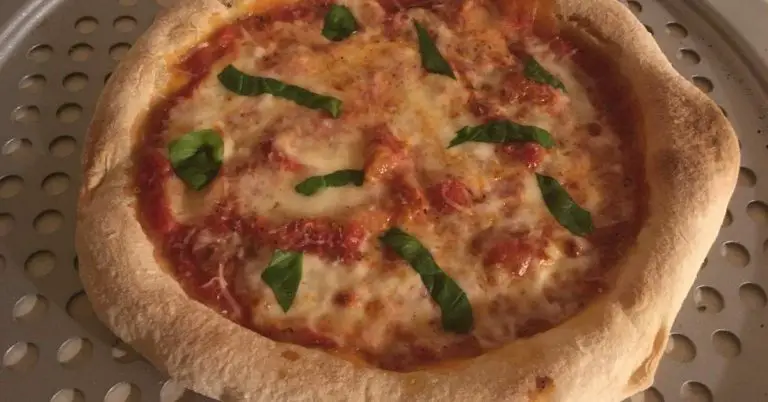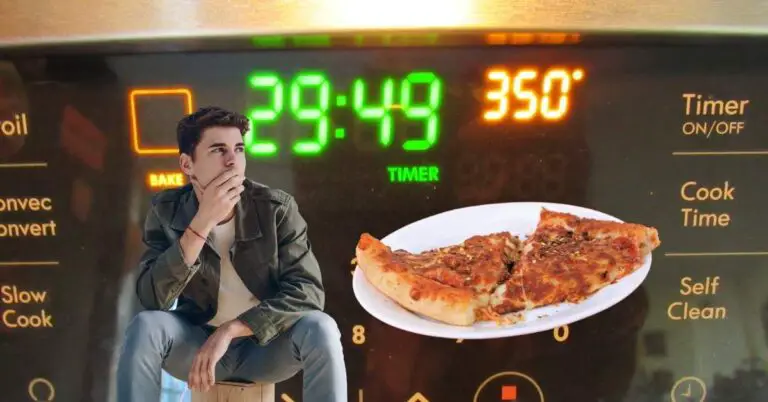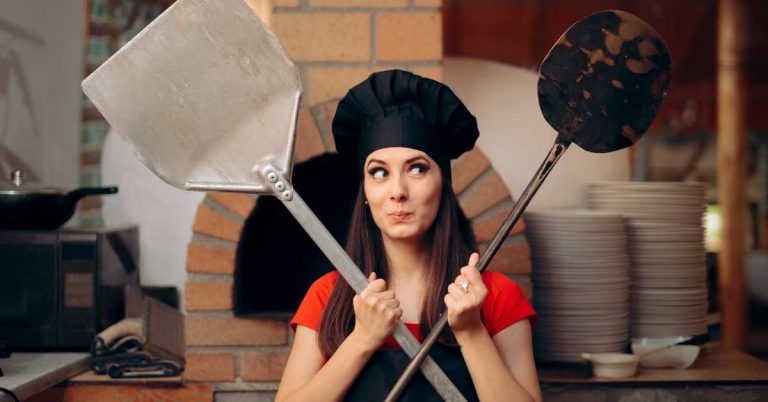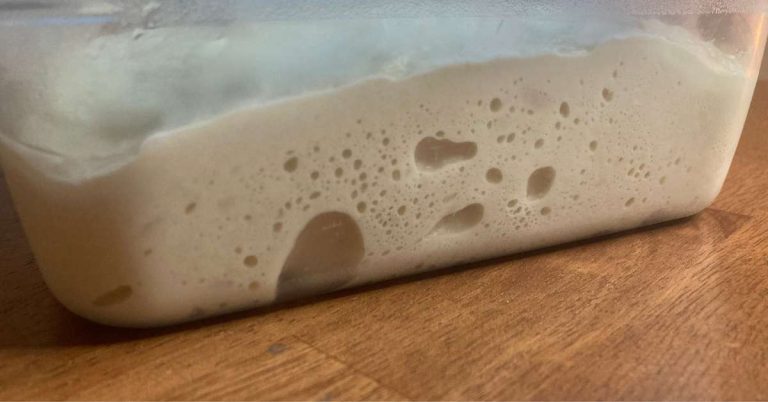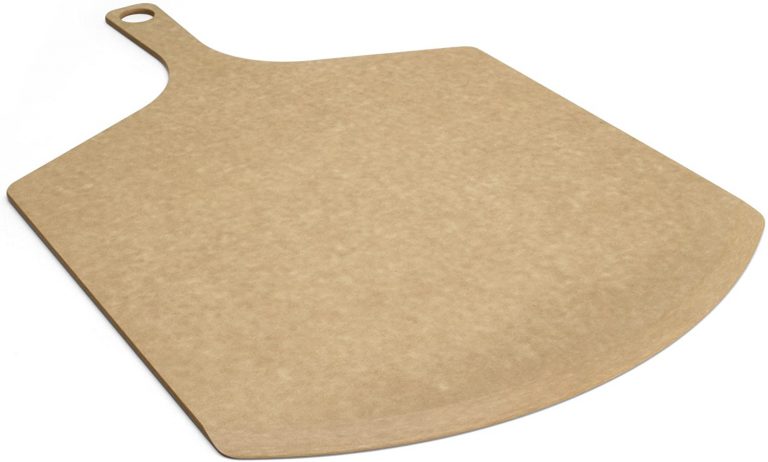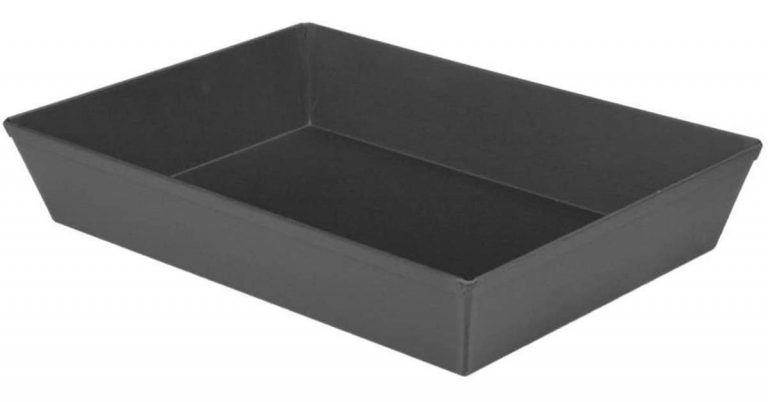How To Use A Pizza Steel in Your Home Oven for Perfect Pizzas Every Time
If you want to make restaurant-quality pizza at home, using a pizza steel (or a “baking steel”) is key. A pizza steel helps your home oven better mimic the extremely high heat of a professional pizza oven. With proper technique, you can achieve the trademark crispy, charred crust.
To use the pizza steel, place it on the middle rack of your oven and preheat on your oven’s maximum temperature for at least 1-1.5 hours. When the steel is preheated, slide the pizza onto it and let it bake for 5-10 minutes or until the crust is golden brown.
You’ll need a pizza peel to transfer the pizza to the steel, but you can use parchment paper as well to make it easier.
Tip: For even better results, try using two pizza steels at once to create a super hot pocket of air between them perfect for making all styles of pizza. Need a pizza steel? Check out our guide to the best pizza steels and stones here.
Using A Pizza Steel: Step By Step Instructions
How to Use A Pizza Steel – Step by Step Guide
Total Time: 90 minutes
-
Place Pizza Steel On Middle Rack
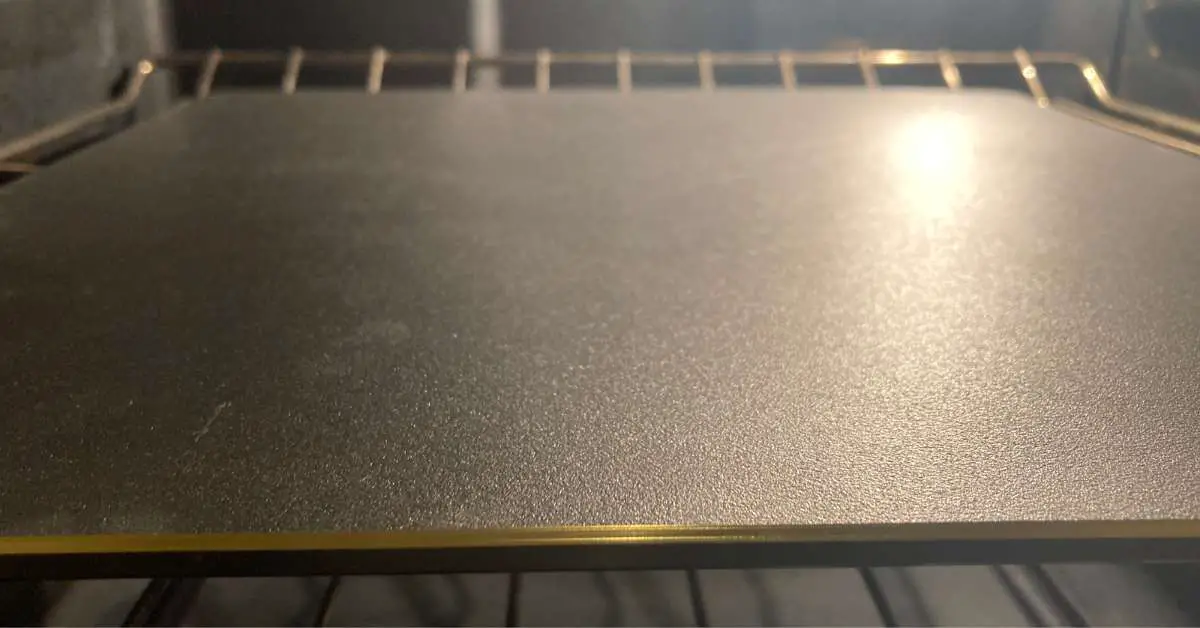
Place the Ooni Pizza Steel 13 on the middle rack of your home oven and set it to the maximum temperature, which is usually around 500F (260C).
-
Preheat Pizza Steel
Preheat the pizza steel until it stops getting hotter. The best way to determine this is by using an infrared thermometer, but if you don’t have one just let it preheat for at least 1 hour. In my home oven set to 500F, for example, the cooking surface of the pizza steel reaches 530F after around 45-60 minutes, but this can vary from one oven to another.
-
Assemble Your Pizza
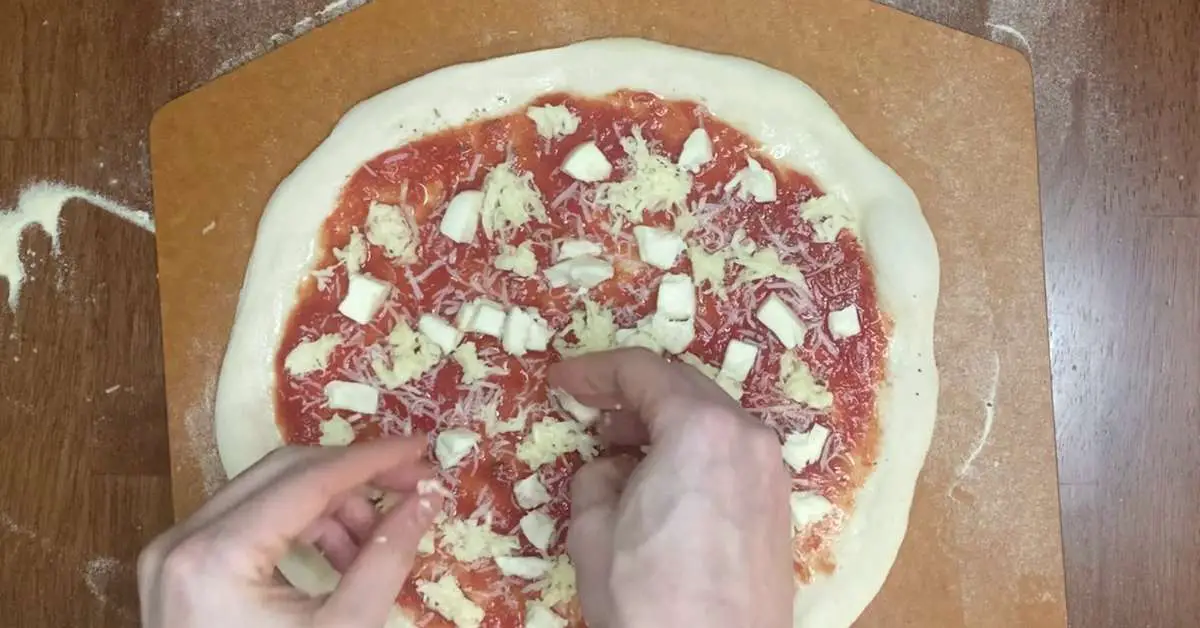
When the pizza steel is preheated and ready, start assembling your pizza. If you’re new to making pizza on a pizza peel, I recommend stretching the dough by hand then transferring it to the peel before adding toppings. This can help to avoid tearing when you pull the pizza onto the peel when its heavy with sauce and toppings. Just be sure to dust the peel with flour and work quickly to prevent sticking.
-
Launch Pizza Onto Pizza Steel

Slide the pizza onto the pizza steel by lining up the peel with the back of the steel at a 45 degree angle and wiggling slightly as you pull it back. Unless your pizza is sticking to the pizza peel, it should slide off quite easily. Again, follow the instructions I’ve linked to above if you’re insure on this step.
-
Let Pizza Cook For 5 Minutes, Then Rotate
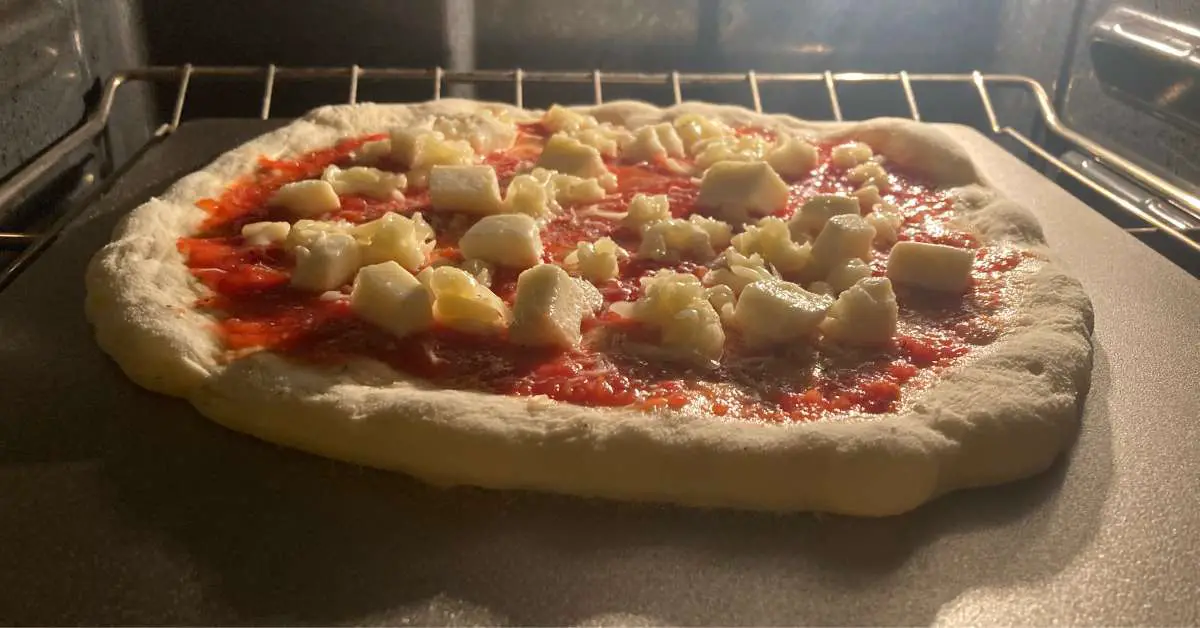
The total cooking time should be around 10 minutes from start to finish, but you want to make sure to rotate the pizza 180 degrees at the 5-6 minute mark. This will ensure that the front and back of the pizza crust are cooked evenly.
-
Check Underside of Crust
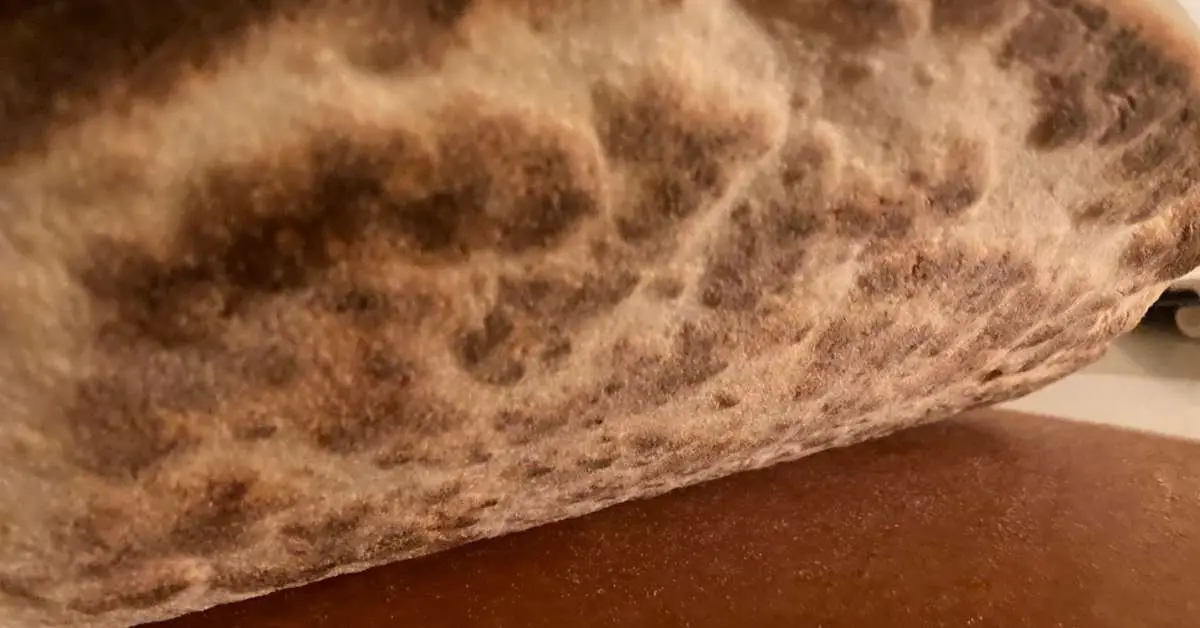
Somewhere around the 7 minute mark, check the underside of the crust. It should be noticeably browned, which is a sign that the pizza is done or nearly done. At this point, give it a few more minutes, or until the toppings are cooked to your liking.
-
Let Pizza Cool, Serve & Enjoy!
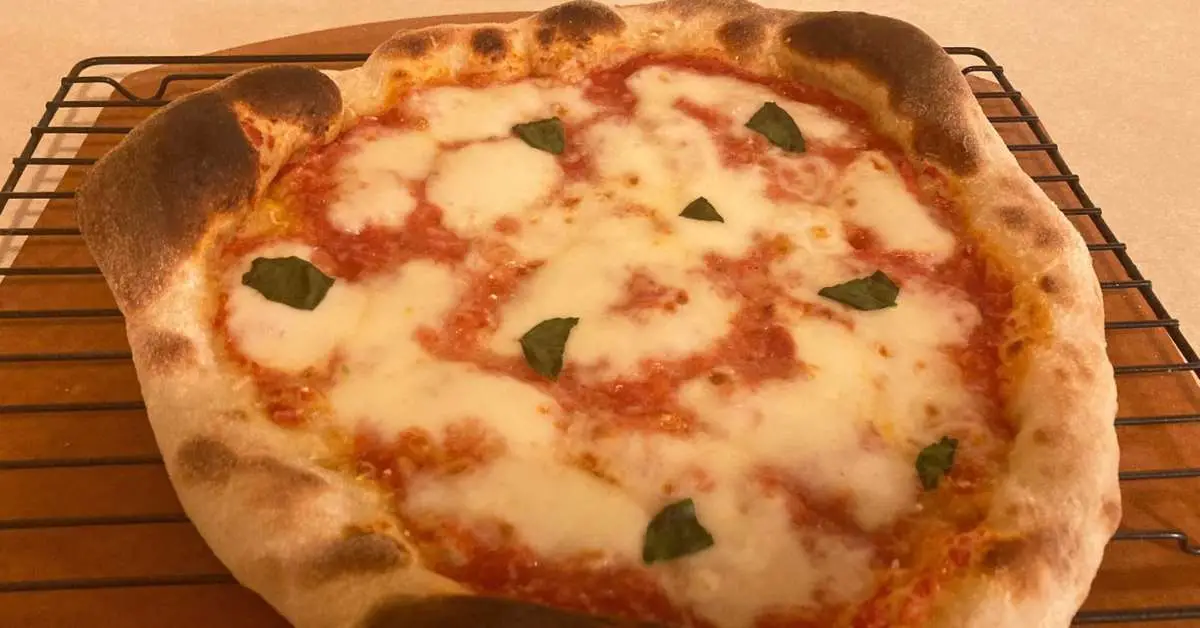
When the pizza is cooked to your liking, take it out of the oven and place it directly onto a cooling rack for 2-3 minutes before cutting. This allows steam to escape from the underside of the crust and prevents sogginess (the whole point of using a pizza steel).
Using A Pizza Peel: The Tricky Part
Placing a pizza steel in the oven and letting it preheat it easy. So is making dough and turning it into a pizza.
But the hardest part of using a pizza steel is learning to use a pizza peel. The pizza peel is how you get the raw pizza from your counter to the pizza steel. It’s not difficult to learn, but it can be intimidating if you’re afraid of making a smoky mess in your oven if you make a mistake on the first try.
My number 1 tip for using a pizza peel is to use lots of semolina flour on the peel to prevent sticking. This will allow the pizza to slide right off without any trouble when launching it onto the baking steel.
To make things even easier for you, I’ve put together this short instructional video that will help you get started.
You can use parchment paper to prevent sticking, but my advice is to master the art of using a pizza peel without one. You’ll get much better results and there’s no risk of the parchment paper burning or falling apart when you try to slide it out.
Preheat Your Pizza Steel Based On Its Thickness
The most important step in using a pizza steel is allowing it to preheat fully. The material and thickness of your steel will determine the preheat time.
- Thinner steels made of aluminized steel require less preheat time, around 60-90 minutes at your oven’s highest temperature.
- Thicker carbon steel pizza steels need 1.5-2 hours preheat fully before use.
During this preheat time, position your steel on a low rack towards the back of your oven. This allows heat to circulate underneath for an evenly cooked crust. But. if you prefer to well-done toppings, put your pizza steel on the top rack for closer proximity to the broiler.
Set your home oven to its absolute highest temperature, at least 500°F if possible, or the highest temp available for electric ovens. If you’re using an infrared thermometer, keep the steel in the oven preheating until it reaches a temperature slightly above your oven’s maximum temperature (usually between 520-540F) before using.
While your steel preheats, prepare your pizza dough and toppings. Once preheated, the steel will be extremely hot, so have your pizza ready for a quick transfer.
Maintaining Your Pizza Steel – How To Avoid Rust
Caring properly for your pizza steel ensures lasting performance and prevents rusting. Here is the proper cleaning process:
- Let the pizza steel fully cool after use before cleaning. Never submerge or rinse a hot pizza steel. Drastic temperature changes can damage the material.
- Once cooled, use a plastic or nylon brush to gently scrub your steel surface and remove any stuck bits of food residue. Rinse residue away with water.
- Avoid abrasive metal brushes or scouring pads as they can scratch and damage the steel over time, reducing effectiveness.
- After rinsing, thoroughly dry the steel using a lint-free towel. Allow to air dry fully before storage to prevent moisture leading to corrosion or rust.
- If discoloration occurs, use a mild vinegar solution soaked into a lint free towel to gently wipe down your pizza steel surface. Rinse and dry fully before storing away.
Proper storage is essential for increasing your pizza steel’s lifespan:
- Store your pizza steel in a moisture-free environment. Exposure to humidity can damage steel leading to rust over time.
- Consider storing on edge instead of flat to allow airflow on both sides of the steel surface.
- Avoid stacking anything on top of your stored pizza steel to prevent pressure dents over time.
By caring for your pizza steel properly and employing the right baking techniques, you’ll be turning out artisanal-quality homemade pizzas to perfection in no time!
Does a Pizza Steel Go on Top or Bottom of Oven?
Whether you put the pizza steel on the top or bottom of your home oven is mostly a matter of personal preference and how you like your pizza cooked.
That said, many people, and even some pizza steel manufacturers, recommend placing the pizza steel on the top rack of the oven and turning on the broiler. This helps to cook the toppings and cheese of the pizza for those who like them well done.
Personally, I find that placing the pizza steel on the top rack of the oven doesn’t bring enough heat to the bottom of the steel and slows down the browning of the underside of the crust. Likewise, turning on the broiler overcooks the toppings and the cheese.
This can lead to a pizza that’s not quite done on the bottom and overcooked on top, which is exactly what I’m trying to avoid by using a pizza steel in the first place.
Ultimately, this question comes down to personal preference and your what kind of home oven you’re using. The best way to figure out which is best for you is to try both and compare the results. The middle oven rack in often a happy medium in either case.
Pizza Steel Alternatives
Pizza steels are so popular because they’re thick and conduct heat super efficiently. Of all the baking tools out there, steels work the best for cooking bread and pizza.
But if you don’t have one, no worries. A baking stone is a solid alternative, and much cheaper. Steel is a better heat conductor, but cordierite stone can still make the base of your pizza super crisp. Just sprinkle some flour or cornmeal on the peel before sliding your pizza into the oven.
If you don’t have either a baking steel or a baking stone, here are some more alternatives:
- Baking Sheet: A simple and effective alternative is the baking sheet. By inverting a rimmed baking sheet on the lowest shelf of your oven before preheating, you create a hot surface great for getting your pizza crisp. This method makes sliding the pizza in and out of the oven easier and doesn’t require the longer preheat time associated with a pizza steel.
- Cast Iron Skillet: Cast iron is a classic choice for a variety of cooking methods, including pizza. It is excellent at retaining heat, which helps develop a deep, rich crust. You can use a cast iron skillet in the oven to replicate a pizza stone’s effect. Preheat it upside down on a sheet pan for safety and ease. Cast iron is durable, versatile, and when seasoned properly, provides a non-stick surface. However, it’s heavy and requires careful maintenance to avoid damage.
- Grills: Grilling is another fantastic way to achieve a crispy, charred-crust pizza. Grills, especially charcoal ones, can reach higher temperatures than most ovens, cooking pizzas in just a few minutes – a great option when feeding a crowd.
- Aluminum Pizza Pans: These pans are ideal for pizza making. They’re lightweight and distribute heat evenly, ensuring a perfectly browned pizza bottom. To prevent sticking, it’s recommended to coat the pan with nonstick cooking spray or cooking oil before adding the pizza dough. Aluminum pans are also suitable for making grilled pizza and are best for baking thin crust pizzas.
- Heavy-Duty Aluminum Pizza Pans: Used in pizzerias, these pans develop a patina over time, which many chefs find desirable. They’re relatively inexpensive and easy to store. For best results, look for heavy aluminum pans with air vents or a ridged design to allow airflow under the crust, and avoid non-stick varieties.
Final Thoughts
From proper preheating to transfer techniques using a pizza peel, and observing optimal bake times until the pizza is done, this guide on using pizza steels, baking steels, and pizza stones effectively for cooking bread and pizza.
With the right tools, ingredients, and techniques, your pizza steel helps mimic the blistering heat of a pizza restaurant oven to achieve crispy crust and melted, gooey cheese on pizza baked right at home. They’re also popular for cooking bread.
It may take a few practice runs to master, but the effort is well worth it when you taste that crispy, chewy, fresh-baked pizza texture.
So try out these tips for prepping dough, transfer tricks, baking pointers, and cleanup steps. Before you know it, you’ll have pizza night mastered thanks to your trusty pizza steel.

